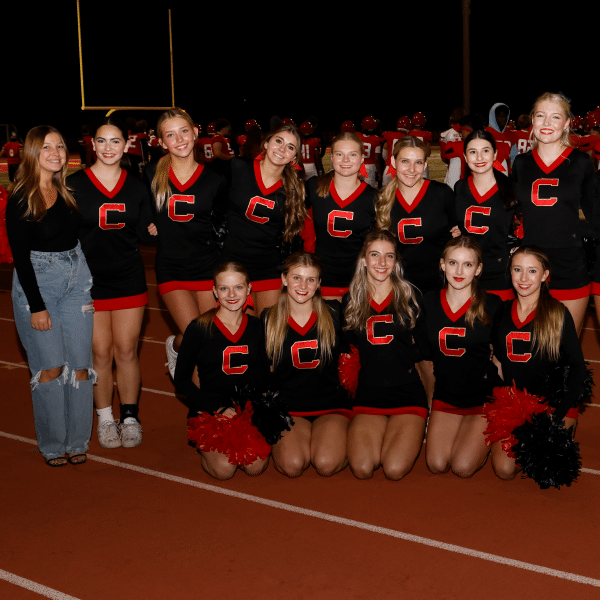ANDERSON Account Executive by day & Chaparral High School’s Head Cheerleading Coach by night (and always…)
Have you ever wondered what it’s like to be a high school cheerleading coach? Maybe not…but shockingly there are a lot more similarities to my day job than you might think! I can translate much of what I do during the day at ANDERSON to my second life as a cheer coach, and vice versa. In the last 4 ½ years coaching this program, I’ve seen my professional life improve from the things I’ve learned from other coaches, the parents, and the athletes themselves. Here are a few ways coaching high school cheer overlaps with my role at ANDERSON.
MANAGING TEAMS
You may think that managing ANDERSON’s internal teams and clients is vastly different than managing high school teenagers…but I hate to say it, some similarities factor into how I manage it all.
At ANDERSON, I oversee both internal and client teams to keep things on track and get projects across the finish line. While at cheer, I manage all of my coaching staff, both JV and Varsity teams, and all of the parents as well. Both take a lot of effective communication and organization on my end.
COMMUNICATION
Communication is key when it comes to building relationships. If you’re not able to effectively communicate information, it can lead to a whole laundry list of issues.
At ANDERSON, I have to be able to communicate clearly with my clients and internal team members to keep projects running smoothly. With clients, we typically hold bi-weekly or monthly meetings where we put together and share an agenda including any new projects we need to discuss, reporting, findings, housekeeping items, etc.
At cheer, I have to not only coach my athletes in their chosen sport but also communicate with the school, the parents, and other teams. My cheer version of communications comes in the form of our weekly newsletter. With limited hours in everyone’s busy days (and being respectful of that), I have taken a “this meeting can be an email” approach when it comes to communicating—with four notable exceptions where in-person meetings are essential: tryouts, football season, competition season, and Nationals. Our newsletter always includes action items in red, bold, and highlighted letters for things like liability waivers due for competitions, Nationals payment due dates, and any fundraising coming up. It also outlines our practice and game schedules for the upcoming weeks.
HOW DO I MANAGE THIS? BY STAYING ORGANIZED.
Email especially.
At ANDERSON, I use my inbox as a to-do list. The things I leave in there include client projects that are either in progress or that I need to follow up on. Once they’re completed, I file them away in the appropriate client folder for safekeeping. This makes it easier for me to track ongoing projects and serves as a reminder of what I have going on.
With my cheer email, I leave my to-do’s unread. Whether they’re vendor communications, competition reminders, fundraising requests, or parent emails—any action items for myself are marked unread so I know to check on these first at the end of my work day before heading to practice.
Overall, even though these roles seem worlds apart, I’ve discovered some pretty big parallels between them. From team management to effective communication, the skills seamlessly translate across my professional and coaching worlds.
